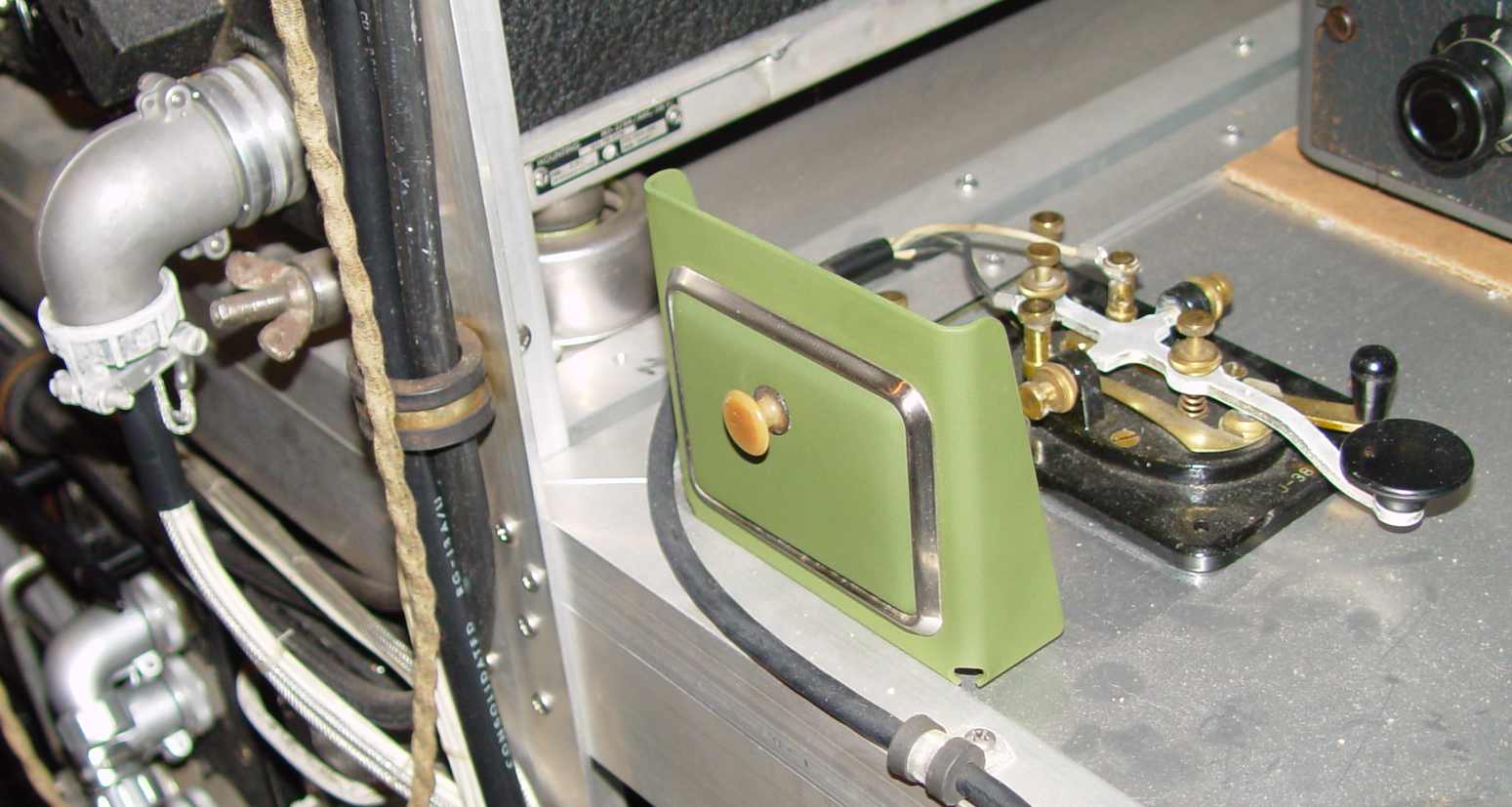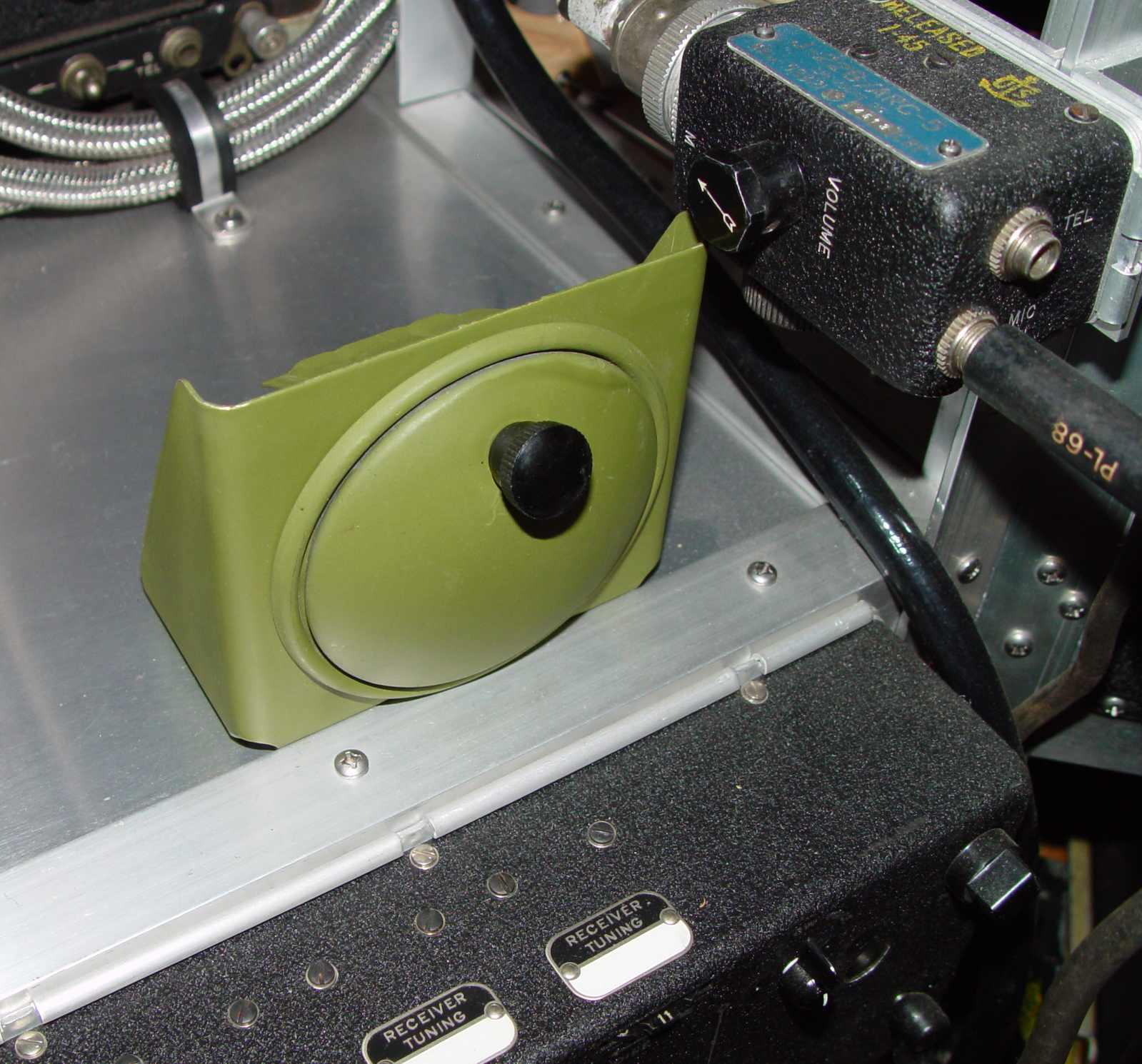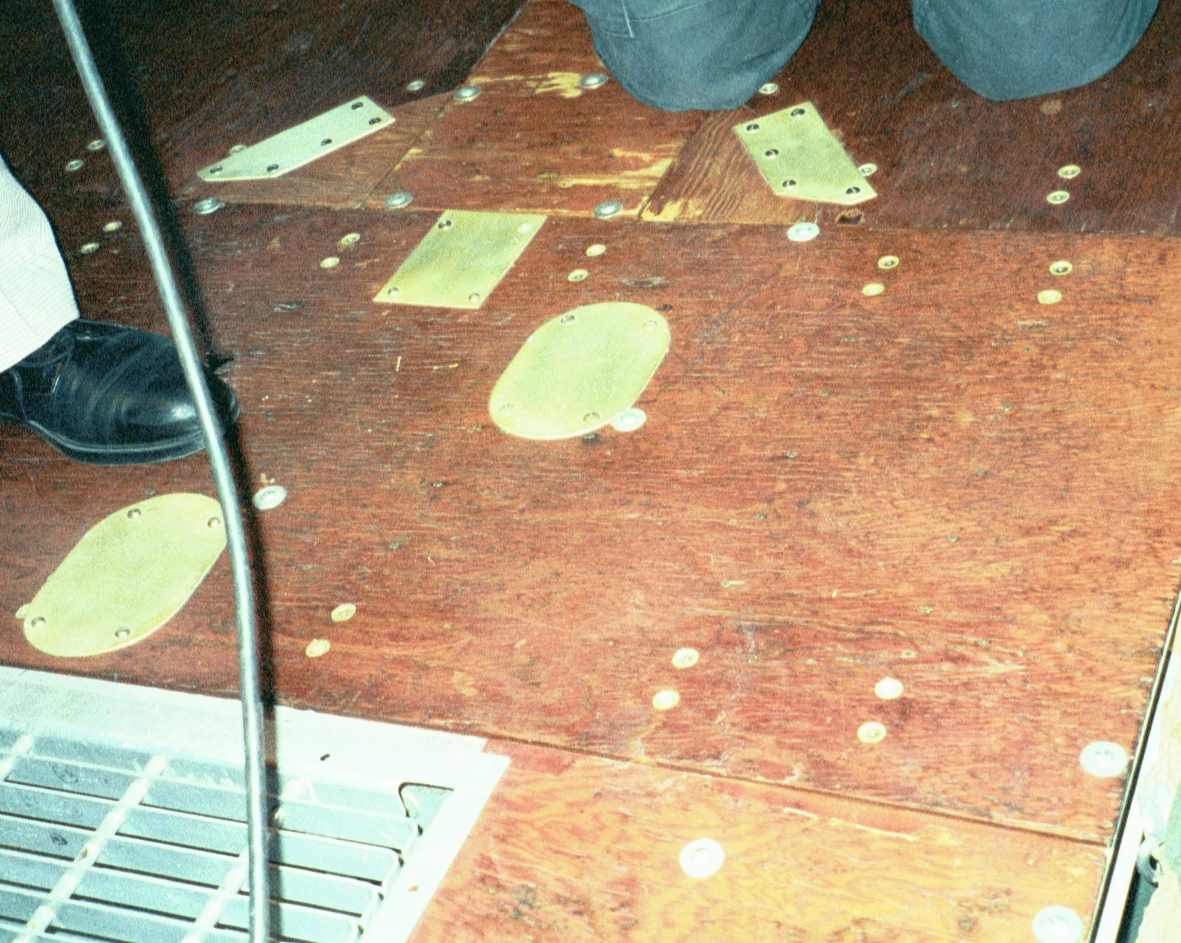Stuff too weird to classify...
For a long time after I became interested in WWII aircraft radios, I wondered
about the strange circular 'controls' shown in the crew positions of old B-17 and B-29 cabin photos. Not
being a smoker, it never occured to me to associate them with an ash tray! Though it seems anachronistic in
today's Surgeon General-influenced environment, all WWII aircraft were equipped with some form of "ash receiver"
for crewmen to use. Up until after the war, these accessories were never made from scratch, however.
They were usually borrowed from automobiles of the period. For example, all the Martin aircraft (B-26, PBM,
PBY, etc.) have "optional" 1939 Dodge "Job Rated" truck ash trays, shown below in a more or less standard aircraft
triangular gusset mount that allows you to install it anywhere there is a flat surface. This type of ash tray was
also used on some Plymouth models through about 1948. I found this particular
sample (NOS) while helping to clean out an old Glenn Martin warehouse in Baltimore.

Ash tray used in Martin-produced aircraft - from a 1939 Dodge truck.
By contrast, GM-produced aircraft, like the B-24 and others, usually employed an accessory ash tray that was
dealer installed whenever the optional radio was installed in the normal ash tray mounting hole in one of their cars.
The one from a 1937 Pontiac is shown below in both aircraft zinc chromate and original finish versions. (Similar ash trays were offered for
other GM makes - for example, the one for the Cadillac featured a chrome plated stimpled surface and had the colorful ink
filled Cadillac crest on the front.)

B-24 aircraft ash tray
The ash tray in the B-17 was taken from a 1936 Ford, appropriate enough since the initial B-17 design was
finalized in 1936. Where this eventually created a paradox was the auto manufacturers' habit of redesigning
their models each year. This led to the strange situation where Boeing was still specifying "1936
Ford" ash trays for both the B-17 and B-29 through the end of the war, almost a decade after Ford had moved
on through several stages to an entirely different design. Of such small things are $600 toilet seats created...

Boeing aircraft ash tray - from a 1936 Ford
****************************************************************
An amazing amount of plywood was used in WWII planes, including unexpected items
such as junction boxes!
 Junction box in Enola Gay
Junction box in Enola Gay
Flooring was usually sheet aluminum, but in some sections varnished plywood was also
used, especially for larger aircraft. This example, from the radar compartment of
the Enola Gay, shows the flexibility and usefulness of this material. The 1/4" plywood is supported
by aluminum "stringers" attached to the fuselage, and reinforced by channels just
inboard of the mounting edges. These panels fit into the stringers the same way that modern
computer floor tiles do, and then are screwed to the stringers with the screws that have the large
silver 1" washers. The version going into the "flight deck" at AAFRadio is a much stiffer 3/4"
thick marine plywood, mounted on 1/2" x 2" aluminum U-channel stringers. There's no need of worry
about weight on the concrete floor, and the ominous creaking when walking around in the back compartment of a
priceless B-29 isn't something that you want to experience on a daily basis. The 1/2" gap off of the
concrete floor will promote air circulation and provides a convenient cable raceway. The aluminum plates
seen on the floor below are strengthening points or provide access to junction boxes for testing or
maintenance without having to remove an entire panel.
 B-29 radar compartment floor
B-29 radar compartment floor
Return to the "peripherals" page




 Junction box in Enola Gay
Junction box in Enola Gay